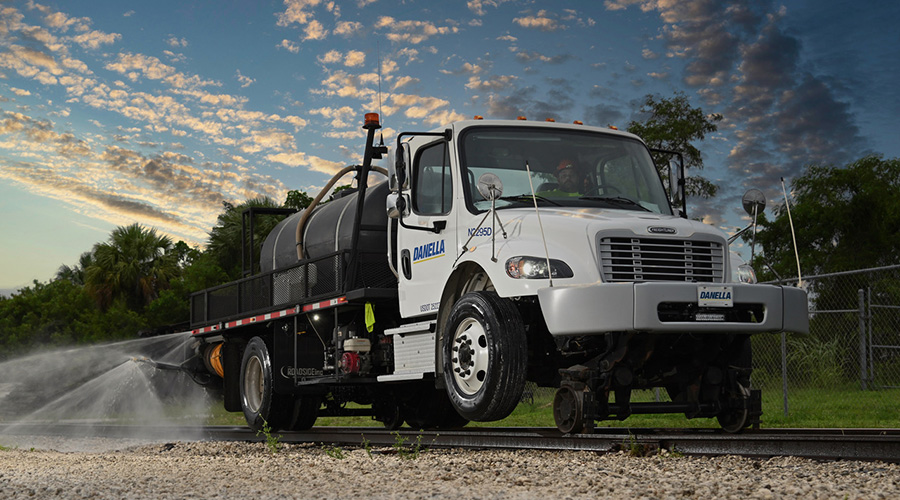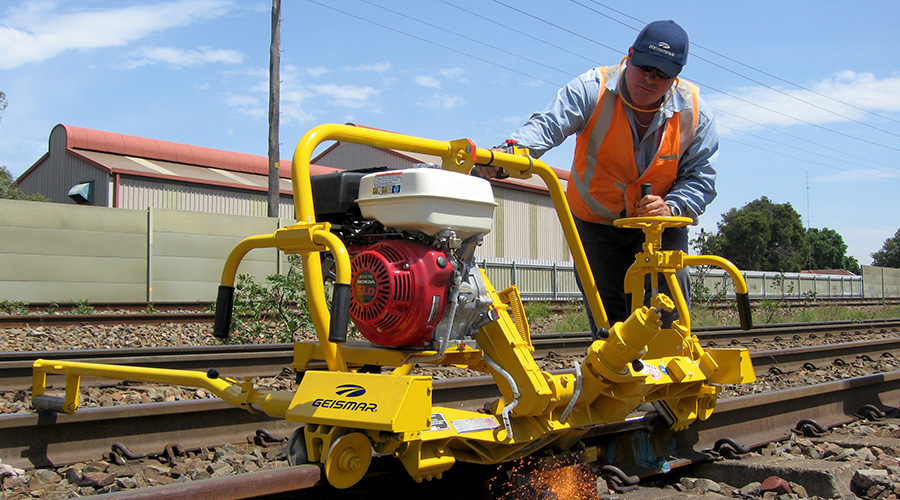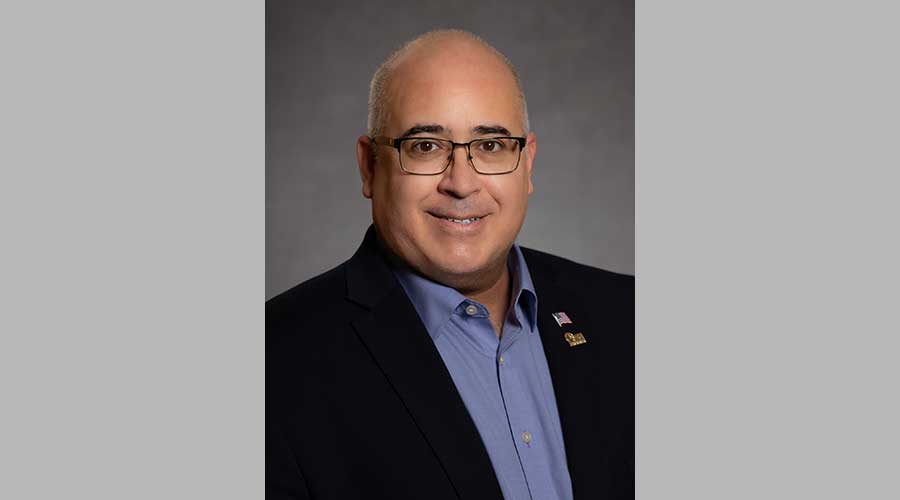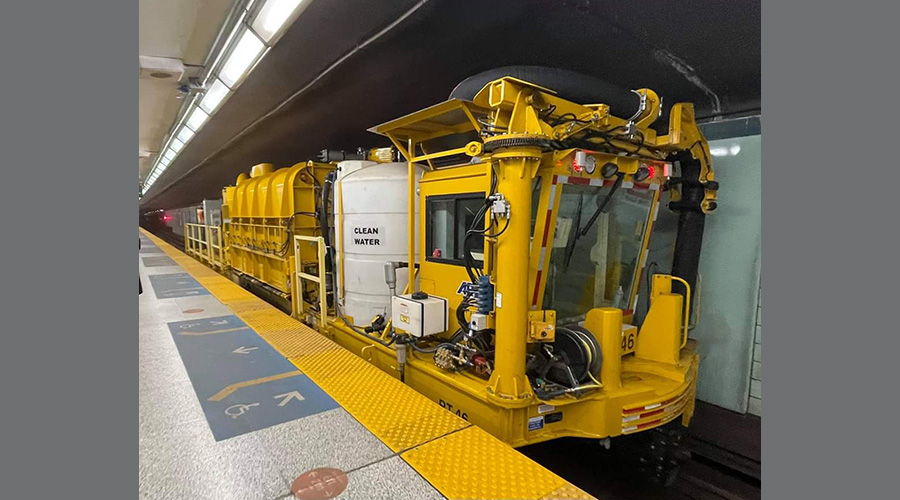Stay updated on news, articles and information for the rail industry
March 2015
Rail News: MOW
Vegetation management: a product and service update (part 1)
— Compiled by Walter Weart
Many railroads rely on vegetation management equipment firms and service providers for their expertise, whether it's providing leading-edge program management or incorporating the latest brush-cutting and herbicide application technology into the weed-control mix.
Progressive Railroading recently asked a sampling of contractors and equipment providers to discuss their services and technology offerings. In the first of a two-part series, emailed responses from four companies follow.
Asplundh Railroad Division
Asplundh Railroad Division specializes in efficient, effective control of undesirable vegetation. The company's newest machine — the Eco-Cutter — combines a mowing/mulching head with a herbicide application system. Asplundh Railroad's operators use the Eco-Cutter to cut brush and apply herbicide simultaneously, eliminating the cost of a follow-up spray truck and reducing the amount of track time required to effectively control vegetation on the rights of way, according to the company. And because the herbicide is applied directly from the cutting head, the risk of drift and off-target treatment is reduced.
Two booms mounted on the truck can reach 30 feet on either side of a track and can be operated independently, depending on brush conditions and width of the right of way.
The Eco-Cutter can be equipped with a flail or a rotary head, depending on customer preference or the task at hand. The 60-inch mowing/mulching heads can handle brush and small trees up to eight inches in diameter.
With a truck-mounted chassis equipped with hi-rail wheels, the Eco-Cutter can get on or off at any crossing, eliminating the cost of a follow-up vehicle.
Rail Construction Equipment Co.
Rail Construction Equipment Co. (RCE) is a diversified construction equipment manufacturer that specializes in providing railroad construction equipment. Backed by the John Deere dealer network, RCE uses conventional construction equipment and modifies the machines for rail maintenance tasks.
RCE's 120D Brush Cutter features a John Deere 12-metric-ton excavator modified to work on rail. The 120-horsepower machine supplies power and hydraulics to operate the eight-foot mower head, which incorporates the latest designs and provides a clear cut without creating hazardous flying debris, the company says. The 90-horsepower engine and "smooth" hydraulics combine to maximize engine output, save fuel and facilitate multifunction operation, the company says. Hydraulic-driven axles with integrated dynamic/fail-safe braking are standard, so there are no chain drives to maintain.
A separate Deere engine and hydraulic system power the brush cutting heads; a 42-inch tree grinding head and a 96-inch brush clearing head are available, according to RCE's website. The unit also features an ergonomic cab designed for comfortable and safe workstation operation. Controls are easy to reach and move for boom and arm functions, and lever efforts have been reduced up to 10 percent, according to the company.
K.W. Reese Inc.
A family owned and operated company, K.W. Reese Inc. was founded in 1972 as a utility right-of-way clearing contractor. Since then, the company's service offerings have grown to include all aspects of utility and railroad vegetation management, railroad track construction and maintenance, and equipment rentals.
K.W. Reese's customers range from railroads to private companies that maintain rail sidings and spurs. The company's aim: to help customers operate efficiently, effectively and safely, whatever the weather.
To that end, K.W. Reese offers assessments and vegetation management services. The company works with railroads and private rail siding owners to trim or remove trees when and where appropriate. Often, there is a need to cut brush and apply herbicides when low-growing vegetation infringes on or near track beds. This right-of-way cleanup can be a programmed service timed with the natural growing cycle of the nearby vegetation, the company says.
K.W. Reese's large fleet of hi-rail forestry equipment enables access to remote locations and allows crews to conduct the work within tight train schedules. The experienced crews have received numerous safety awards for their work, the company says.
Mercier's Inc.
Mercier's Inc. offers an array of services, including on-track railroad vegetation management, and right-of-way herbicide application and mowing.
"With increased demand to keep the rail cars moving in a rail yard, it has become more and more inconvenient and inefficient for the railroad to utilize traditional herbicide application methods for vegetation management," said President and Chief Executive Officer Craig Mercier. "The savings for a railroad by eliminating track personnel, engine crew and arranging track time is thousands of dollars per day."
Given the costs a railroad incurs "to work our spray truck onto the tracks," Mercier's recently introduced the Radio Actuated Treator (RAT), Mercier said.
A patented robotic-based, remotely controlled, dry herbicide spreader, RAT can be maneuvered between the rails and is small enough to "ride under a rail car," Mercier said. "In the body of RAT, cameras are mounted to visually control travel down and between the rails."
The remotely controlled spreader also features a variable rate material flow mechanism from ounces to pounds per acre, as well as an adjustable spread pattern from three to 16 feet wide.
"What this means to the railroad industry is that they will no longer have to move rail cars for the hi-rail spray truck to gain access to the track," Mercier said. "No railroad employees are necessary to affect the use of RAT. Additionally, with the proprietary encapsulated blend of dry herbicides, the application can be done during months when yard traffic is not as intense and still provide season long control for the railroad."
Walter Weart is a Denver-based freelance writer. Email comments or questions to prograil@tradepress.com.


 LRW Honors Amtrak’s Acheson As Railway Woman Of The Year
LRW Honors Amtrak’s Acheson As Railway Woman Of The Year
 From Editor-In-Chief Foran: Of Gender Equity And Inclusion
From Editor-In-Chief Foran: Of Gender Equity And Inclusion
 Spotlight On Some Of Today’s Rail Safety Products
Spotlight On Some Of Today’s Rail Safety Products
 Women of Influence in Rail eBook
Women of Influence in Rail eBook
 railPrime
railPrime







